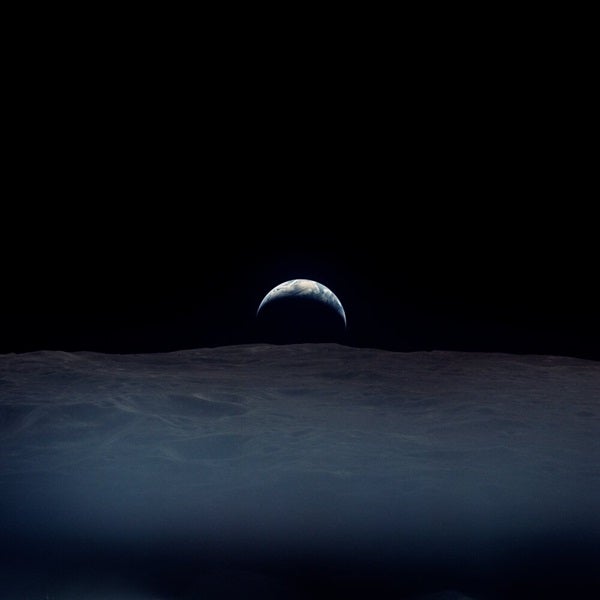Everyone knows what planet Earth looks like… right?
But from the earliest black-and-white photos returned by high-altitude rockets to the daily flow of snapshots taken by astronauts on the ISS, none really give us a full picture. That’s because these shots are all taken from too nearby. And when distant spacecraft have turned around to snap pics of the home they left behind, their results aren’t much better. These full-planet pictures consist of many separate images combined, taken with cameras that don’t see the way the human eye does.
Only one small group of humans has ever seen Earth as it truly appears: the Apollo astronauts. But although their images are publicly available, even these shots don’t tell the whole story. The original and retouched versions you’ll find on the internet have low resolution, poor color correction, and other artifacts that detract from our planet’s true beauty.
An updated view
Toby Ord, Senior Research Fellow in Philosophy at Oxford University in the U.K., has changed that. While researching images for the cover of his new book, The Precipice, Ord went searching for high-quality photos of Earth — but he came up short. So, he sought out scans of the original Apollo film (which is stored in a freezer inside a larger refrigerator at Johnson Space Center in Houston, Texas). These raw scans, Ord recounts on his website, were not much better — poorly exposed, scratched, and rife with other flaws.
Ord tried his own hand at restoration. He adjusted the whites of our planet and the black of space so that both appear true to reality. He also manually removed marks such as dust, scratches, and crosshairs. All this was done, he writes, guided by two principles: to be true to the photographs and to be true to Earth.
“The greatest challenge was in getting the colors right, since so few people have seen this with their own eyes,” Ord tells Astronomy. “The Earth is so often depicted with vivid blues and greens, that it took me a long time to trust the evidence of the photographs themselves and preserve the real colors of our planet as seen from space — blue and white and brown, with even the most lush vegetation showing just a hint of green.”
After many long evenings of work, the results are stunning. Below is a sampling of Ord’s fully restored images of the entire Earth, gleaned from more than 18,000 original Apollo shots.
No longer overlooked
Ord’s favorite is the earthrise shot by Apollo 12, also featured on the cover of The Precipice. “The original was terribly overexposed and hence overlooked by history,” he says. “But as soon as I corrected the exposure, I saw the majesty of the scene, with the radiant crescent Earth rising above the lunar wastes.”
“I was thrilled that I was able to use it for the cover of The Precipice,” he adds. The book, now available, examines the uniquely precarious times we as humans currently inhabit, where the acquisition of power often outpaces that of wisdom.
That unique earthrise witnessed by the Apollo 12 astronauts, Ord says, is “a perfect vision of the fragility of our time.”
You can view the entire gallery and access the images in full resolution on Ord’s website.










